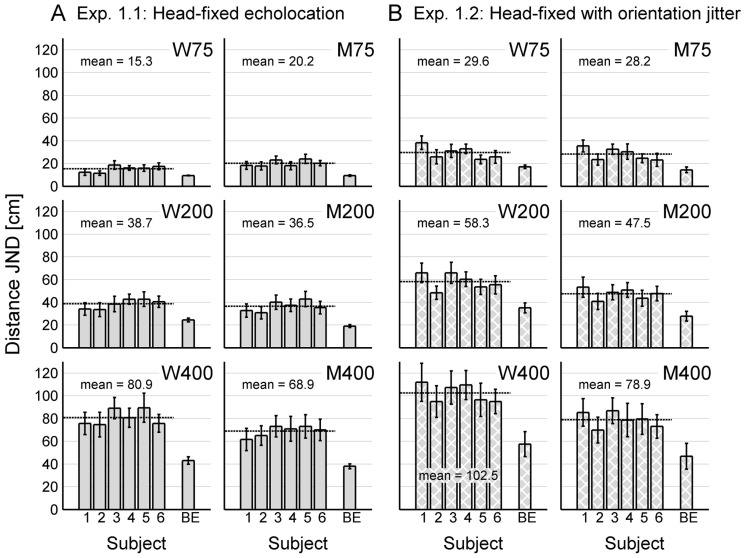Figure 4. Results of Experiment 1.
Performance is shown in terms of individual JNDs (averaged across the last three experimental runs for each subject, error bars represent standard deviations across these runs) for the six sighted subjects (subject 1–6) and the blind echolocation expert (BE). The mean performance across all sighted subjects is displayed as a dashed line and in written form. Panels in the same row represent the same reference distance, panels in the same column represent the same lateral distance (M75, M200, M400: results from positions along the corridors midline; W75, W200, W400: averaged results from positions near the left and near the right lateral wall). (A) Without orientation jitter, the sighted subjects performed best at reference position W75 and worst at reference position W400. This shows that a nearby lateral wall can act as a helpful reference when the distance to the target reflector and to the lateral reflector are approximately in the same range, whereas it impedes performance when the target distance exceeds the distance to the lateral wall considerably. (B) Introducing an orientation jitter impaired performance significantly in close proximity of a lateral wall (W75, W200, W400), especially for large reference distances. The blind echolocation expert performed better than the sighted subjects in all conditions, especially for large reference distances.

